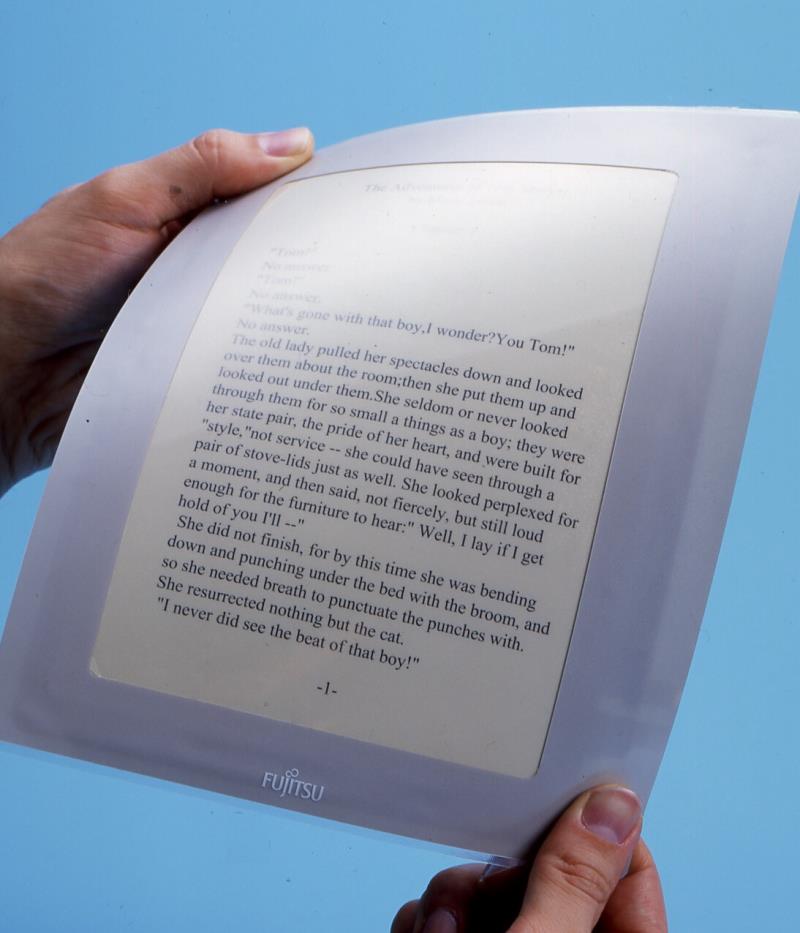The world’s first graphene-based e-paper has been developed, announced a China-based technology company. Guangzhou OED, in collaboration with another unidentified Chinese company, claims that the material promises thin screens that are both more bendable and brighter because they will be able to display light with more intensity.
The companies also suggest the product will cost less because the carbon-derived graphene is cheaper to source and manufacture than the exotic indium metal used in conventional e-paper products.
WHAT IS GRAPHENE?
Graphene is a sheet of carbon atoms bound together with double electron bonds (called sp2 bonds) in a thin film only one atom thick. The atoms in graphene are arranged in a honeycomb-style lattice pattern. Graphene is the basic structural element of several forms of carbon, including graphite, carbon nanotubes and fullerenes.
ELECTRONIC PROPERTIES
Graphene has an extremely high electron mobility,
according to Andrew McWilliams, a BCC Research analyst.
“Mobility determines the speed at which an electronic device (for instance a field-effect transistor, which forms the basis of modern computer chips) can turn on and off,” he explains. “The very high mobility makes graphene promising for applications in which transistors must switch extremely fast, such as in processing extremely high-frequency signals.”
McWilliams says that the electrical conductivity of intrinsic graphene is “quite low,” but its conductivity can be increased dramatically by doping or by the application of the electric field.
“This enhanced conductivity may give graphene applications in chemical and biochemical sensing devices, in which a charge signal from, for instance, a molecule adsorbed on the device is translated into an electrical signal by changing the conductivity of the device,” McWilliams explains. He adds that graphene’s conductivity coupled with its low resistivity, transparency and mechanical toughness should make it useful in touchscreens and photovoltaic cells.
OPTICAL PROPERTIES
In the optical region, graphene is practically transparent, absorbing only 2.3% of the light. According to McWilliams, transparent graphene films can serve as window electrodes for optoelectronic applications such as liquid crystal diode (LCD) displays, touchscreens, and photovoltaic cells. McWilliams concurs with Guangzhou OED in that graphene-based films offer a potential alternative to current indium-tin-oxide (ITO) films, the increasing scarcity and resulting high cost of which is a growing problem for manufacturers.
“Graphene is a saturable absorber,” McWilliams says. “That is, its absorption of light decreases with increasing light intensity. Graphene can be saturated readily under strong excitation over the visible to near-infrared region. This property could lead to applications for graphene in fiber lasers and ultrafast photonics. The optical response of graphene nanoribbons has also been shown to be tunable into the terahertz range by an applied magnetic field.”
GRAPHENE E-PAPER READY IN A YEAR?
Thus far, the new material has not been publicly demonstrated. It remains unknown how available products will be even after they move into production next year, as Guangzhou OED forecasts.
The central question is commercial production of the product. Those challenges have yet to be worked out. Although the company expects to start production of graphene e-paper in a year, it's unclear if the new material will be sold in partnership with other companies with a high profile in marketing e-readers, like Amazon's Kindle device.
If the new e-paper proves to be as advertised, it could mark a major shift in e-reader technology. Graphene, at a mere 0.335 nanometers thickness, would mean thinner displays, less weight, more durability and of course, much more flexibility. It seems possible that such a material could usher in a paradigm shift—from e-readers that look like tablet computers, to e-paper that looks like old-school paper, but which is animated like the scrolls in the Harry Potter films.
McWilliams anticipates the commercially significant market for graphene products to develop between 2015 and 2020, when he projects the market to reach more than $310.4 million. After 2020 the market should continue to grow rapidly, McWilliams expects, approaching $2 billion by 2025.




